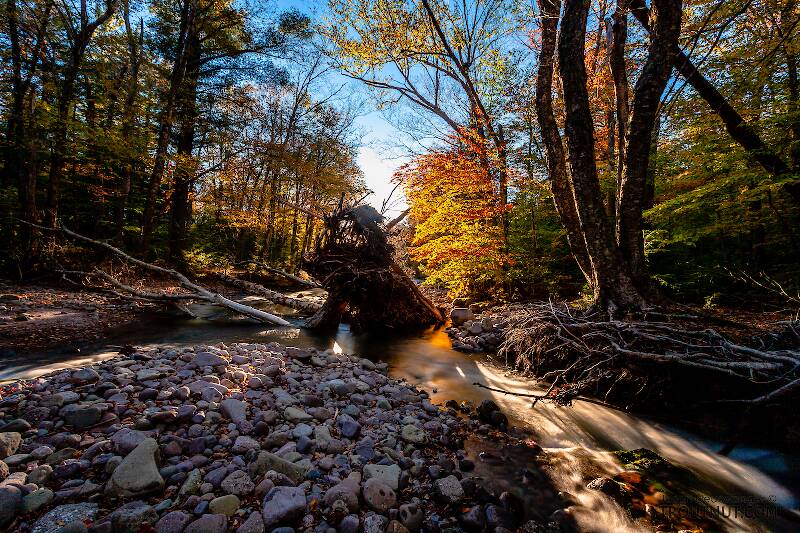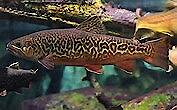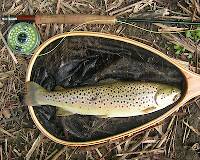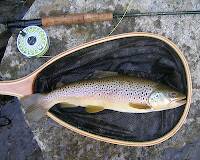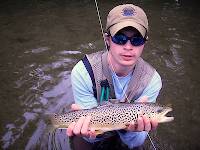
Salmonflies
Pteronarcys californica
The giant Salmonflies of the Western mountains are legendary for their proclivity to elicit consistent dry-fly action and ferocious strikes.
Featured on the forum

Nymphs of this species were fairly common in late-winter kick net samples from the upper Yakima River. Although I could not find a key to species of Zapada nymphs, a revision of the Nemouridae family by Baumann (1975) includes the following helpful sentence: "2 cervical gills on each side of midline, 1 arising inside and 1 outside of lateral cervical sclerites, usually single and elongate, sometimes constricted but with 3 or 4 branches arising beyond gill base in Zapada cinctipes." This specimen clearly has the branches and is within the range of that species.

Troutnut is a project started in 2003 by salmonid ecologist Jason "Troutnut" Neuswanger to help anglers and
fly tyers unabashedly embrace the entomological side of the sport. Learn more about Troutnut or
support the project for an enhanced experience here.
Flytyerinpa on Apr 29, 2018April 29th, 2018, 12:30 pm EDT
I'm wondering if anybody ever read about the movement of trout ( stocked ) one place I fish there are stretches of several miles between the bridges where the fish truck dumps the fish in. I really like fishing isolated places where there no other fisherman in sight. My question is if I walked a mile or two to get away from crowds, what are the chances that some of the fish swam that from where they were stocked. I don't mind walking but with waders rod and reel fly's mis. gear and a lunch it could be a long trip for nothing.
RleeP on Apr 29, 2018April 29th, 2018, 12:52 pm EDT
I think a lot depends on a variety of factors: 1) How long have the stocked fish been present and accordingly, had time to relocate. 2) Has there been many if any high major water events since the stocking took place. These will sometimes relocate relatively newly stocked fish as well. 3) Sometimes, species and specific strain or origin of the stocked fish can also make a difference in how much they move. For example, it used to sort of be conventional wisdom that PA stocked RT ran downstream as soon as they could after stocking. But I think the Commission stocks a different strain now and I've heard a couple of the biologists say that these fish are actually more likely to more or less stay put than the browns they currently work with. 4) How many fish were stocked in the first place. The more that were stocked, the more likely that at lest some of them will spread out.
Bottom line is that hiking in as you are considering will probably mean you are fishing over a significantly lower density of stocked trout. But if This is part of the trade-off for the solitude you gain. But I'd be willing to bet that if a decent interval has passed -23 weeks or more) and if the habitat is roughly commensurate, you'll find some fish away from the primary stocking points.
Bottom line is that hiking in as you are considering will probably mean you are fishing over a significantly lower density of stocked trout. But if This is part of the trade-off for the solitude you gain. But I'd be willing to bet that if a decent interval has passed -23 weeks or more) and if the habitat is roughly commensurate, you'll find some fish away from the primary stocking points.
Strmanglr on Apr 30, 2018April 30th, 2018, 2:08 am EDT
If the stream holds trout year round I would think your much more likely to hook into carry over trout from years past and into much bigger fish. A much more enjoyable experience imo.
TimCat on Apr 30, 2018April 30th, 2018, 10:38 am EDT
Yeah, like mentioned above, if trout can survive there permanently, you're probably likely to catch the better fish away from the stocking point. That being said, it has to be good trout habitat too. I'd scope the river out and try out the sites that seem to be the juiciest habitat for trout (temperatures, insect populations, cover, etc). Good luck to ya! I'm the same. I like to hike or wade a while to get away from the humans. Ha
"If I'm not going to catch anything, then I 'd rather not catch anything on flies" - Bob Lawless
TimCat on Apr 30, 2018April 30th, 2018, 10:42 am EDT
Oh and ps. Sometimes expeditions to try and find good spots just aren't successful, but at least you'll get a good hike in and know the area better. I've also hiked to a spot in May, thought it wasn't great water, then fished it again in July and killed it. There's a lot of factors in play that I'm still learning and that's part of the fun
"If I'm not going to catch anything, then I 'd rather not catch anything on flies" - Bob Lawless
Quick Reply
Related Discussions
Topic
Replies
Last Reply
Re: No fish but some beautiful scenery and a big scary (true) bug!
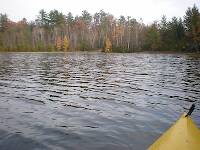
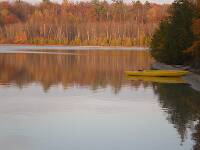
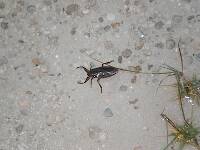
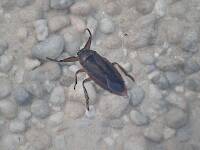
In the Photography Board by Jmd123




In the Photography Board by Jmd123
3
Nov 2, 2011
by Entoman
by Entoman
10
Feb 24, 2010
by CaseyP
by CaseyP

